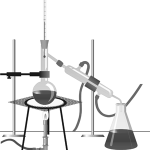It's been awhile since I've done my weekly post... Call it school's out, call it distracted, call it something. For those that have been awaiting with baited breath I apologize, I'll get back in the swing in a week or two.
As there is more and more talk about global warming, shrinking ice sheets, record temperatures, shifting of the magnetic poles, and if all that wasn't enough, discussion of the 6th mass extinction being on the not so distant horizon (caused by us humans of course) lets all do our part and use LED lights; why not right?
Apparently, not all industry is bursting at the seams with excitement for light at a fraction of the energy cost. What may come as more of a surprise, I'm not actually referring to the energy companies. Instead I'm referring to the makers of laundry detergents.
For years, detergent manufacturers have used fluorescent whitening agents (FWA) to increase whiteness perception by enhancing luminance and providing a chromatic blue shift when viewed under daylight and incandescent light. This is a scientific way of saying, these agents absorb UV light and re-emit it in the blue color spectrum, which will overpower the yellowish color that we typically associate with dingy clothes.
The problem with LED lights is that they don't exactly emit light in the UV spectrum making this FWA trick a bit useless. Although lights can be tuned to emulate the effect of incandescent / halogen lights, it likely will come with an associated cost.
So as Edison's invention (or was it Tesla?) continues its death throes, and you remember with longing those days of Price Is Right and the $17 detergent that sends the mountain climber off the cliff, there is some hope.
Have a friend put on a black shirt, stare at it awhile without blinking or moving your gaze, and then quickly look at a white wall. You'll see that the shirt is now whiter than white.
References:
- Houser, Kevin W. "Whiteness Perception under LED Illumination" LEUKOS: The Journal of the Illuminating Engineering Society of North America. Volume 10, Issue 3, 2014
